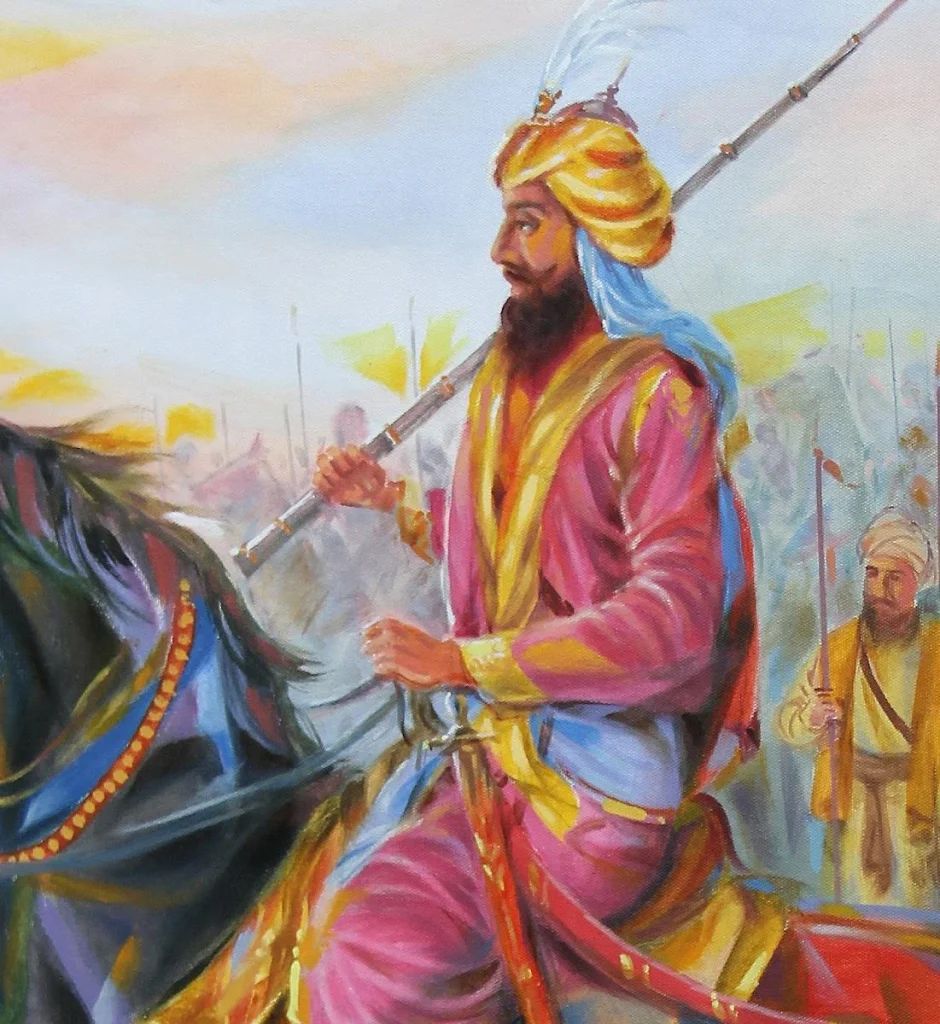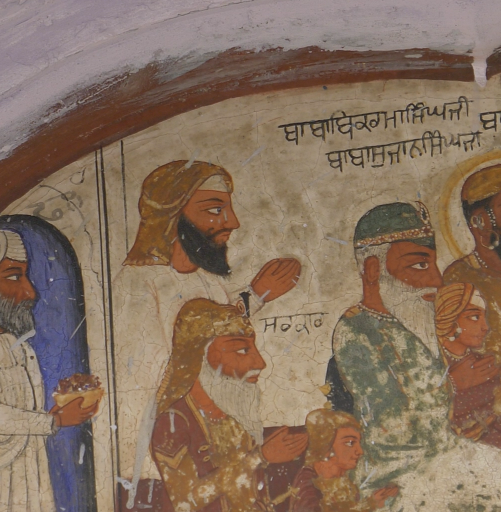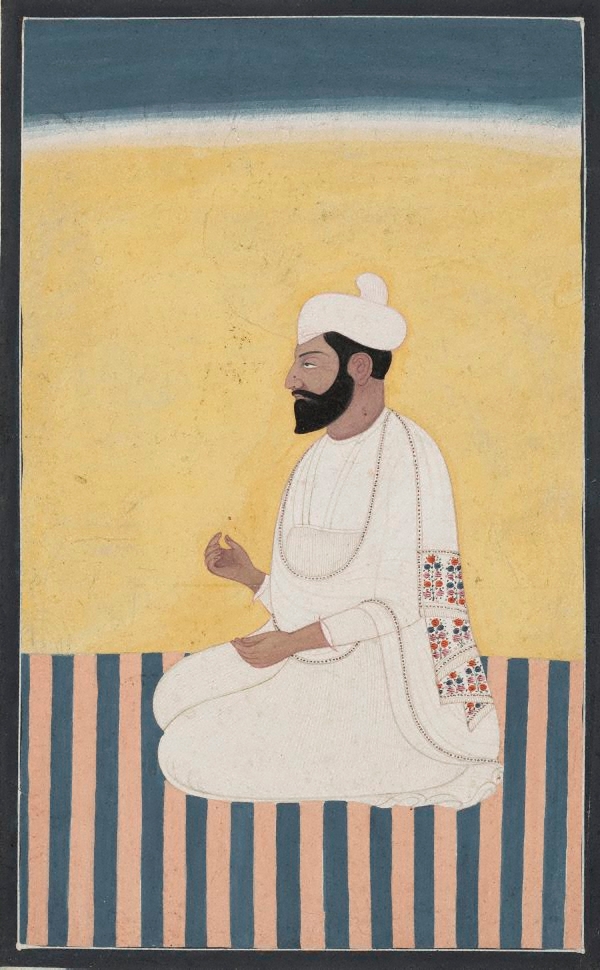Discover the legacy of Sodhi Vadbhag Singh, a descendant of Guru Hargobind, who led Sikh resistance against Afghan oppression in 18th-century Punjab.
ALA SINGH, BABA (1691-1765), Sikh mis leader who became the first ruling chief of Patiala, was born in 1691 at Phul, in present day Bathinda district of the Punjab, the third son of Bhai Ram Singh. His grandfather, Baba Phul, had been as a small boy blessed by Guru Hargobind, Nanak VI. Ala Singh\'s father and his uncle, Tilok Singh, had both received the rites of initiation at the hands of Guru Gobind Singh who conferred on their family the panegyric, "Your house is mine own. "
Explore Atar Singh Kalianvala's pivotal role as an influential soldier and chief during Sikh times. Discover his legacy in Punjab's rich history.
Discover Banda Singh Bahadur, the fearless Sikh warrior who seized land for the Khalsa in the 18th century, paving the way for the Punjab conquest.
BIKRAM SINGH BEDI, BABA (d. 1863), was the third and youngest son of Sahib Singh Bedi of Una, a lineal descendant of Guru Nanak. On Sahib Singh`s death in 1834, Bikram Singh suceeded to his father`s jagirs and position as preceptor to royal family of Lahore. After the deaths of Maharaja Kharak Singh and Prince Nau Nihal Singh, Baba Bikram Singh tried to bring about a reconciliation between Maharaja Sher Singh and his collateral Sandhanvalia sardars. Baba Bikram Singh felt irked when British troops were stationed at Lahore after the AngloSikh war of 1845-46.
CONSTITUTIONAL REFORMS OF 1919: SIKH DEPUTATION TO ENGLAND. In August 1917, the Secretary of State for India, Edwin Samuel Montagu, made the declaration that the aim of British policy was the introduction of responsible government in India. When Montagu visited India that autumn, Maharaja Bhupinder Singh, ruler of Patiala, met him on behalf of the Sikhs. A deputation of the Sikh leaders also waited upon the Viceroy, Lord Chelmsford, on 22 November 1917 and pressed their claim to one-third representation in the Punjab, especially in view of their services in World War I. The Montagu Chelmsford report published in July 1918 proposed to extend to the Sikhs the system adopted in the case of Muslims in provinces where they were in a minority.
DHARA SINGH (d. 1860) succeeded his father, Mehar Singh, to the family estate situated in the Nakka tract of land upon the latter`s death in 1843. Dhara Singh joined Raja Sher Singh with his horsemen at Multan in 1848. He fought against the British in the battles of Ramnagar (22 November 1848) and Gujrat (21 February 1849). He died in 1860.
EUROPEAN ADVENTURERS OF NORTHERN INDIA, 1785 to 1849, by G. Grey, first published in 1929 and reprinted by the Languages Department, Punjab, Patiala, in 1970, contains biographical sketches of over one hundred Europeans who came to or served in the Punjab during Sikh times. The book, which is the result of "some six years of labour" in the archives of the Punjab Government as well as the consultation of a large number of contemporary memoirs and other works, supplements Compton`s European Adventurers which the author found both out of date and incomplete. Broadly speaking, these adventurers fall into two groups: well known men like George Thomas and Avitabile and the lesser known men "of whom no account has hitherto appeared." They could also be classified as combatants and noncombatants; the former category includes Generals like Ventura and Potter and the latter class includes medical men like Honigbergcr and Harlan, the antiquarian Masson and the engineer Bianchi.
GUJJAR SINGH BHANGI (d. 1788), one of the triumvirate who ruled over Lahore for thirty years before its occupation by Ranjil Singh, was son of a cultivator of very modest means, Nattha Singh. Strong and well built, Gujyar Singh received the vows of the Khalsa at the hands of his maternal grandfather Gurbakhsh Singh Rorarivala, who presented him with a horse and recruited him a member of his band. As Gurbakhsh Singh was growing old, he made Guijar Singh head of his band. Soon the band was united to the force of Hari Singh, head of the Bharigi misi or chief ship. Gujjar Singh set out on a career of conquest and plunder.
Discover Gopal Singh's legacy as a Punjabi poet, journalist, and critic, known for translating Sri Guru Granth Sahib into English. Explore his works and impact.







